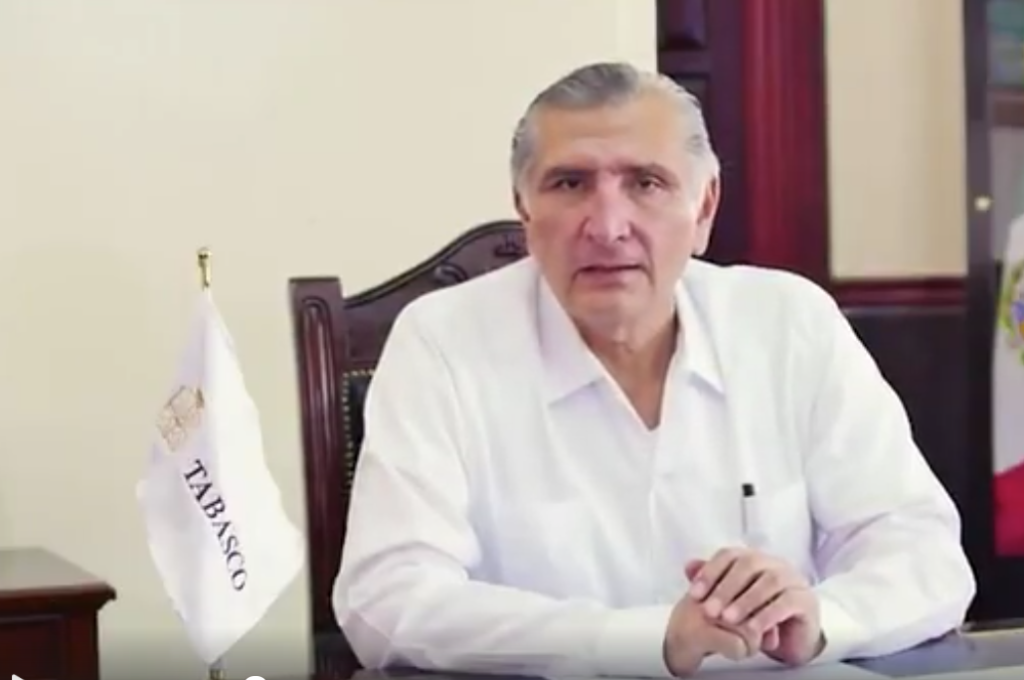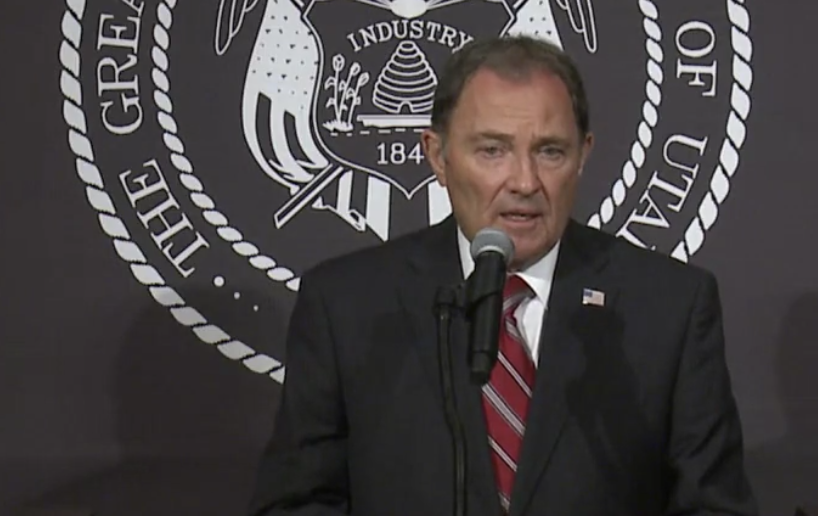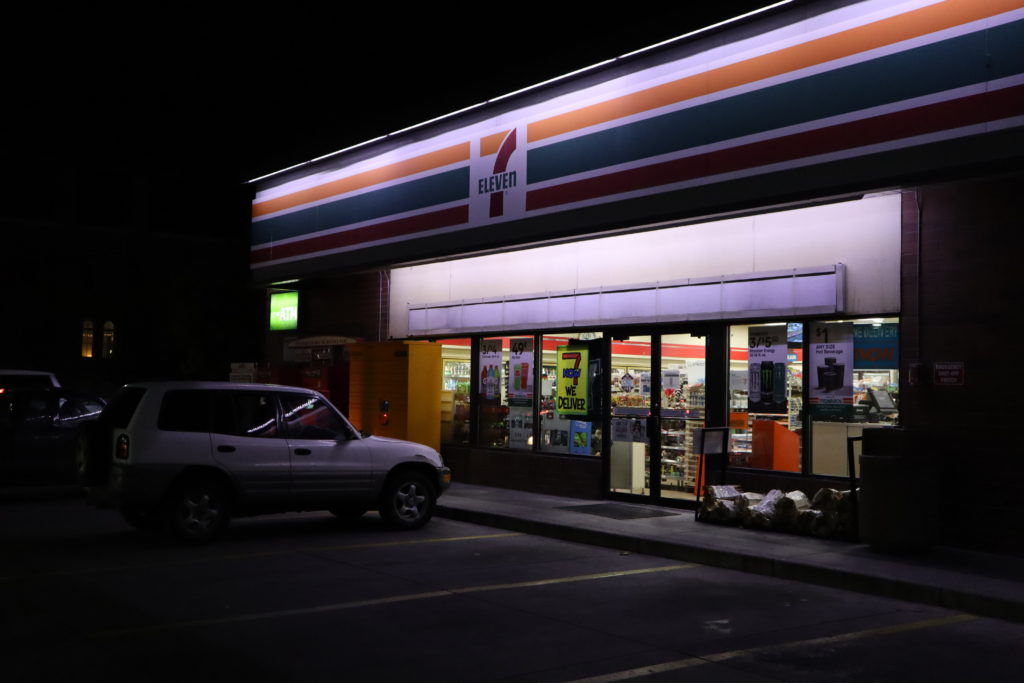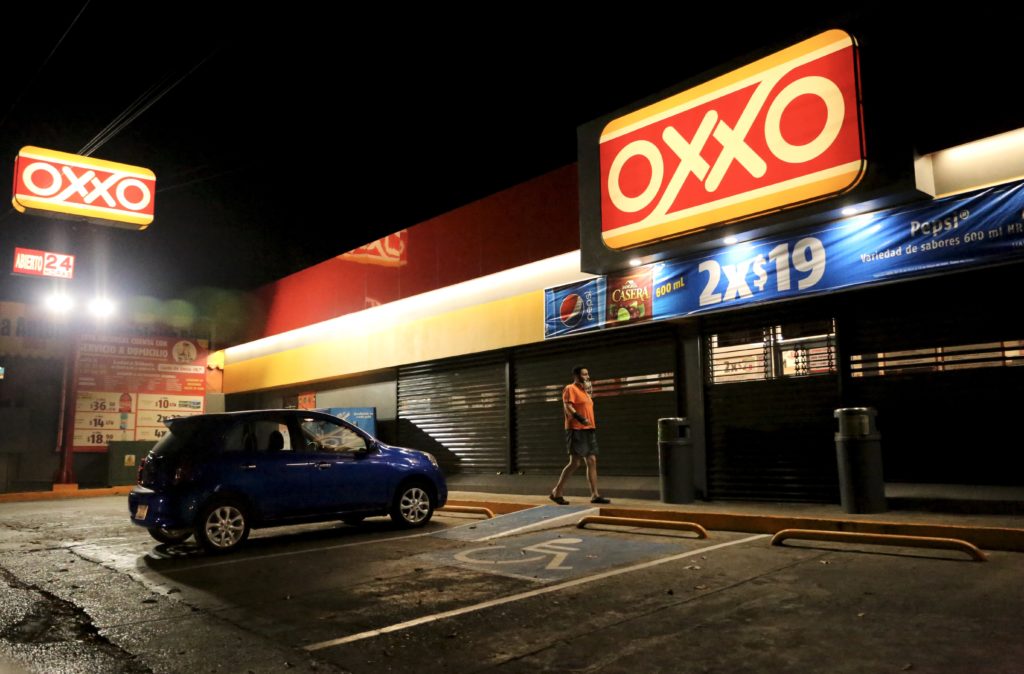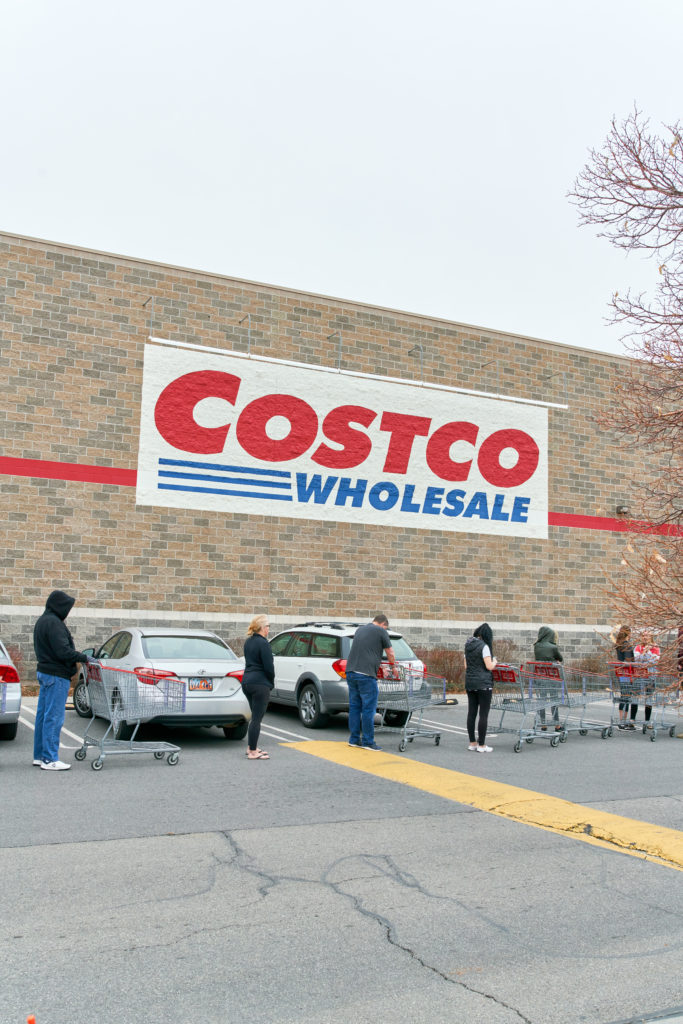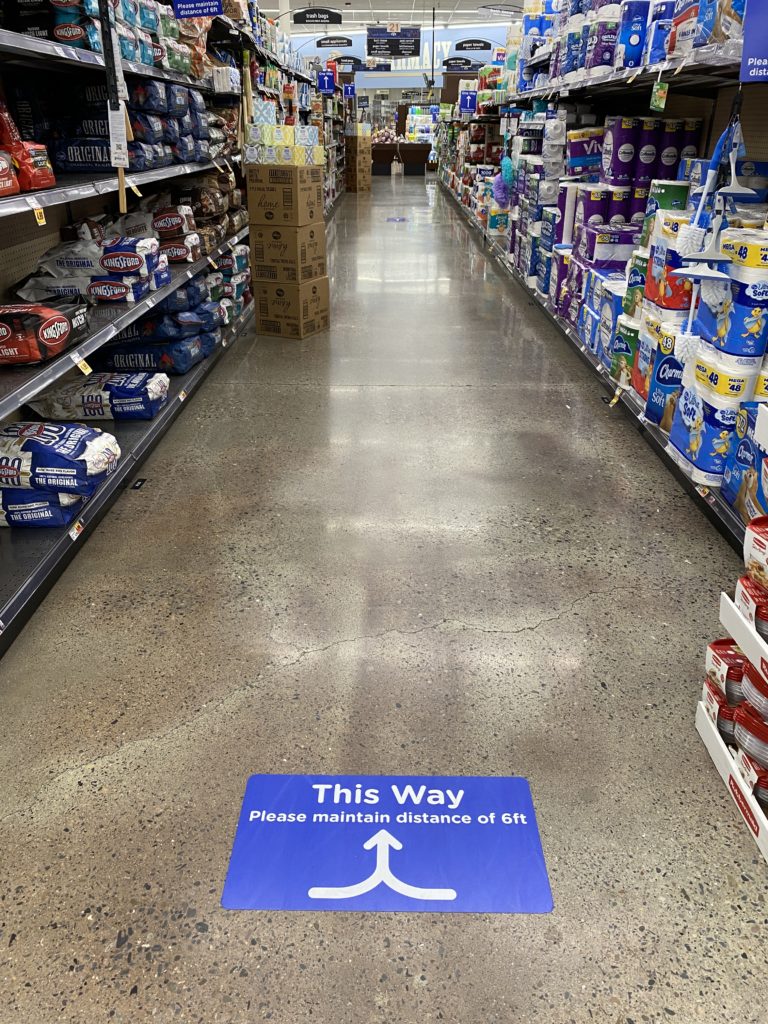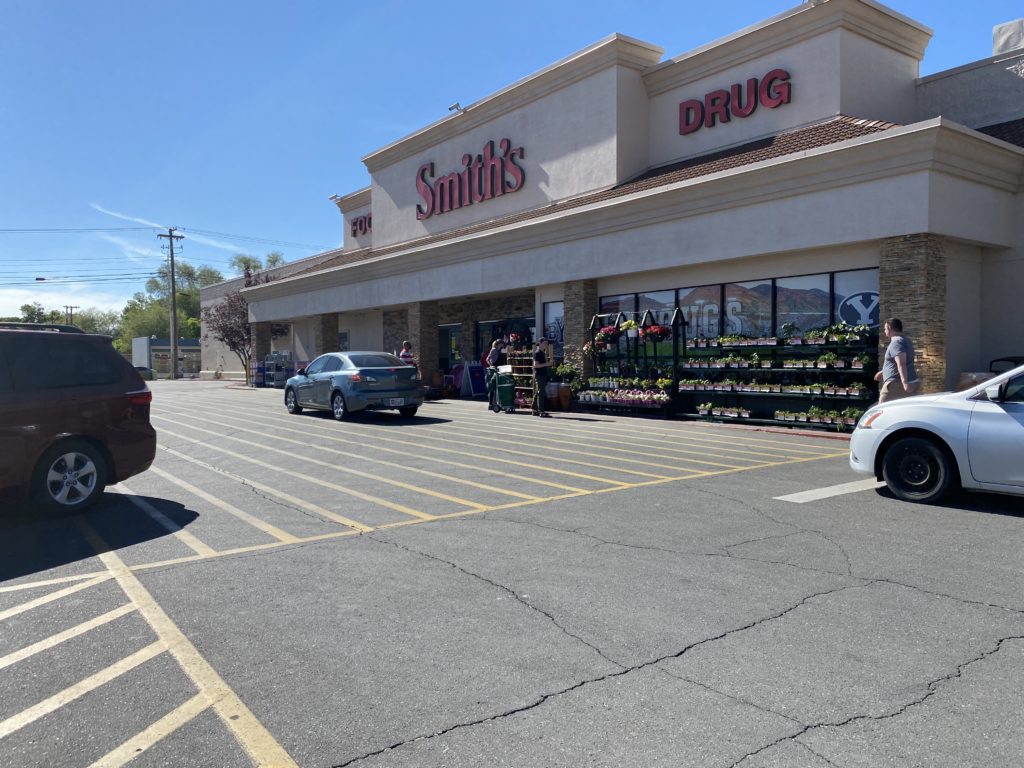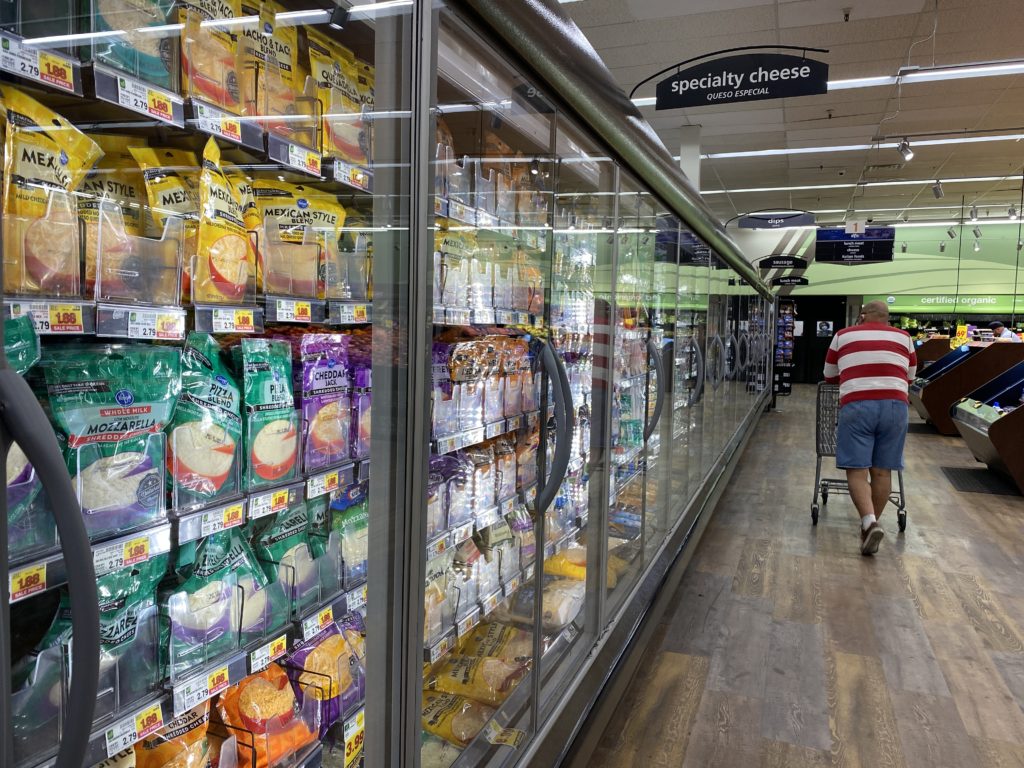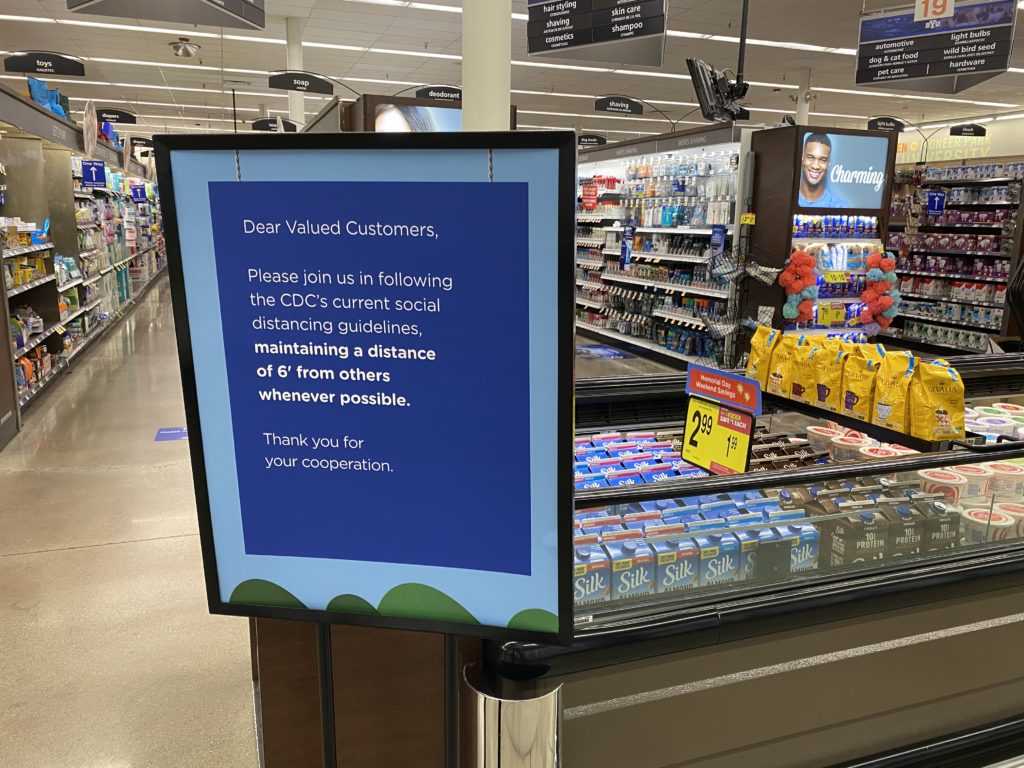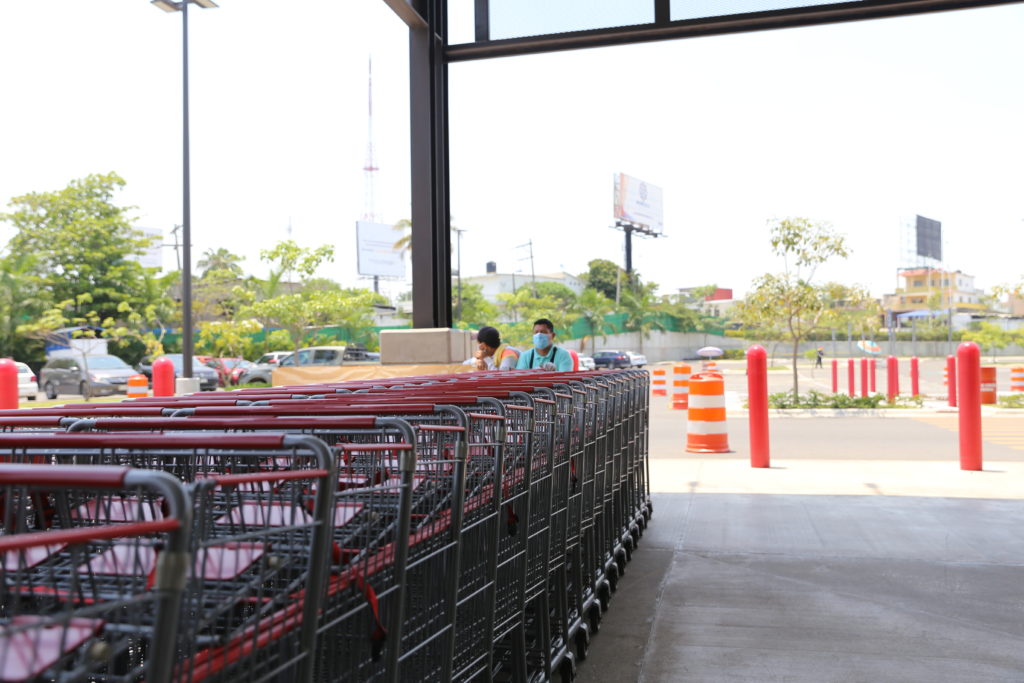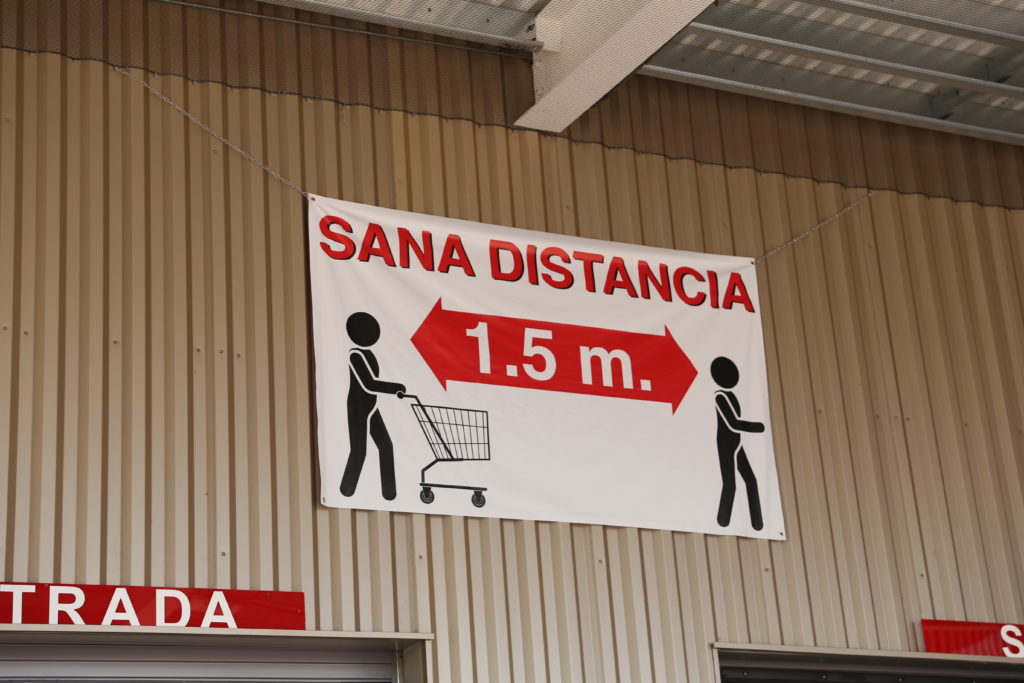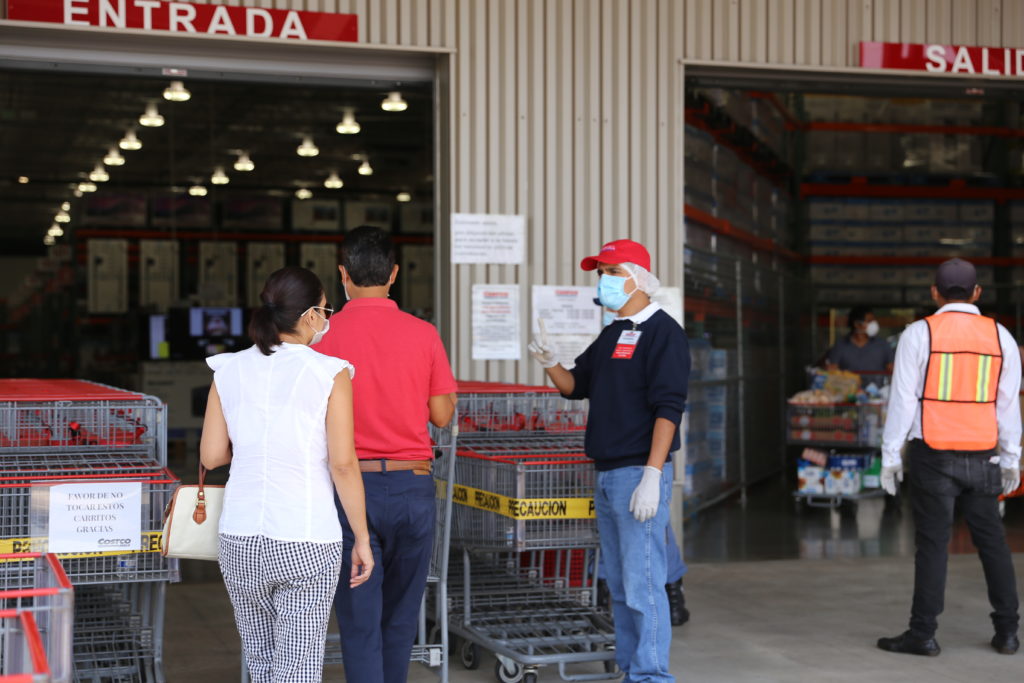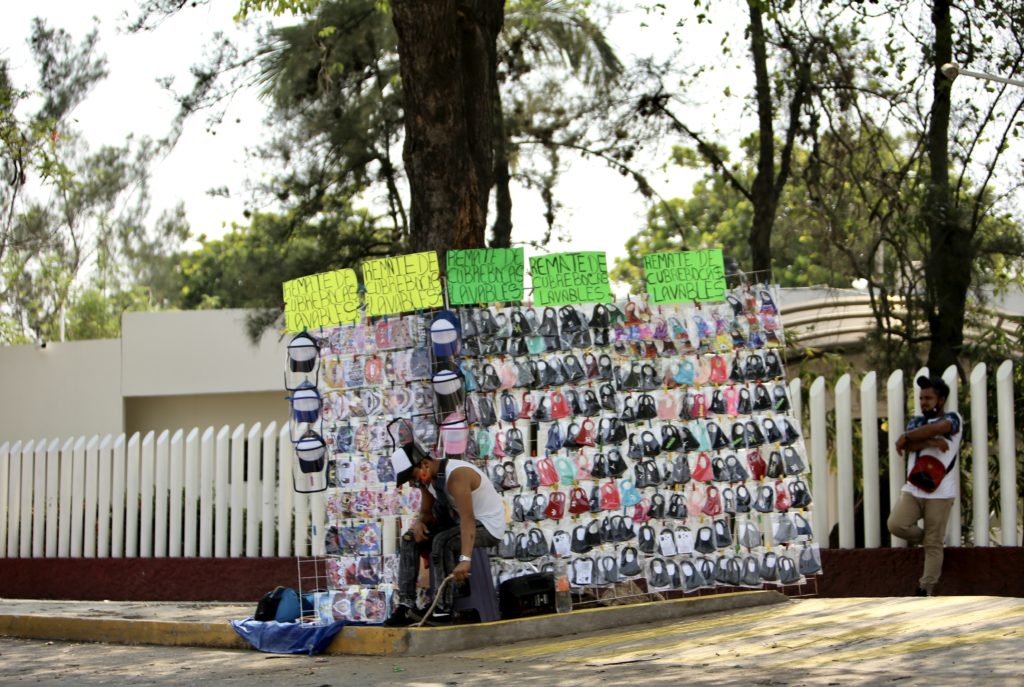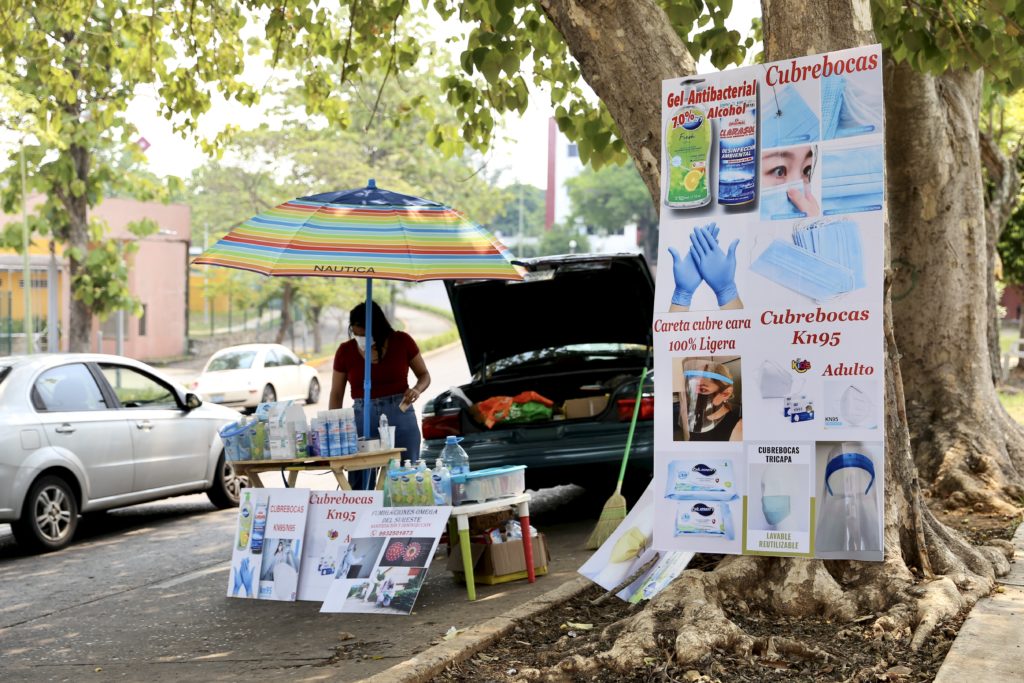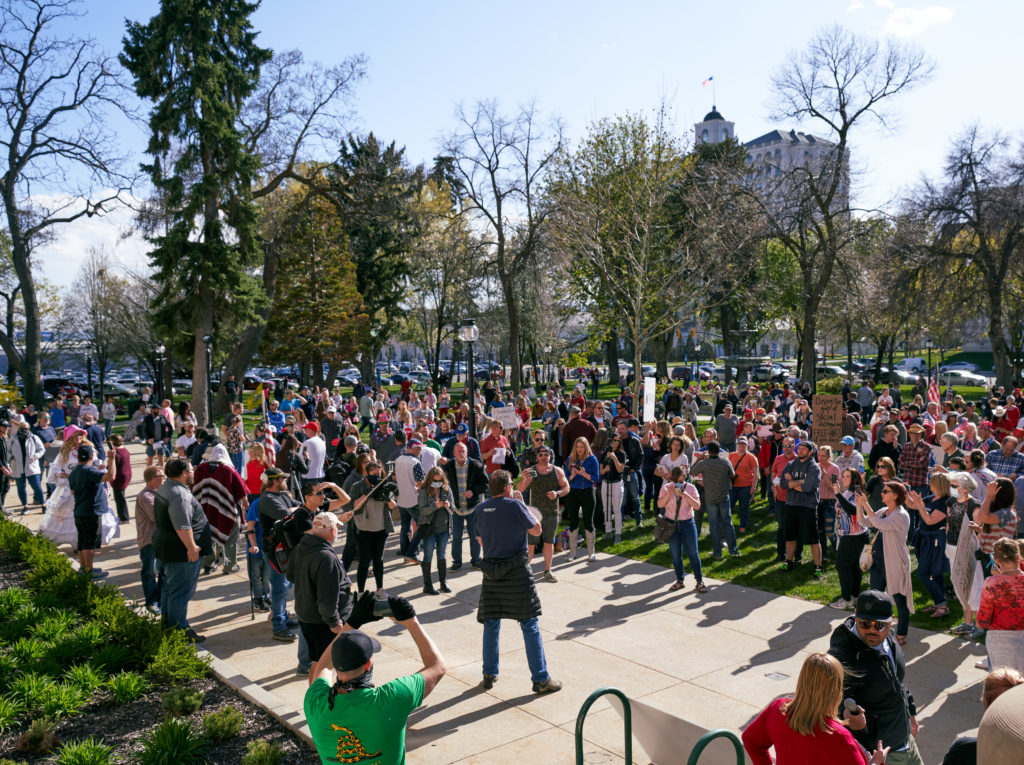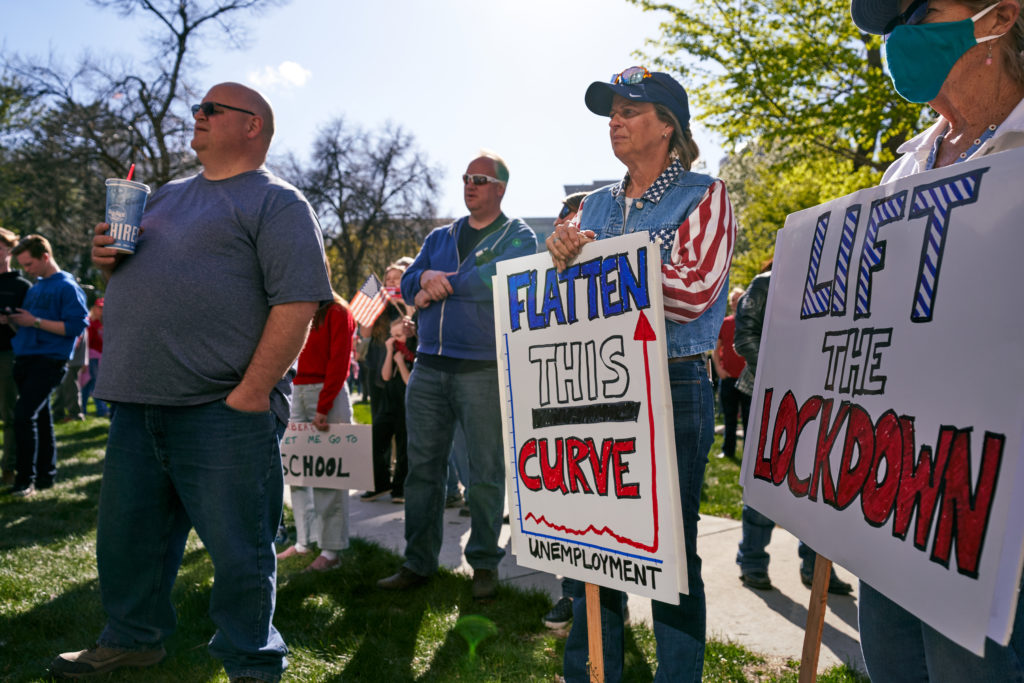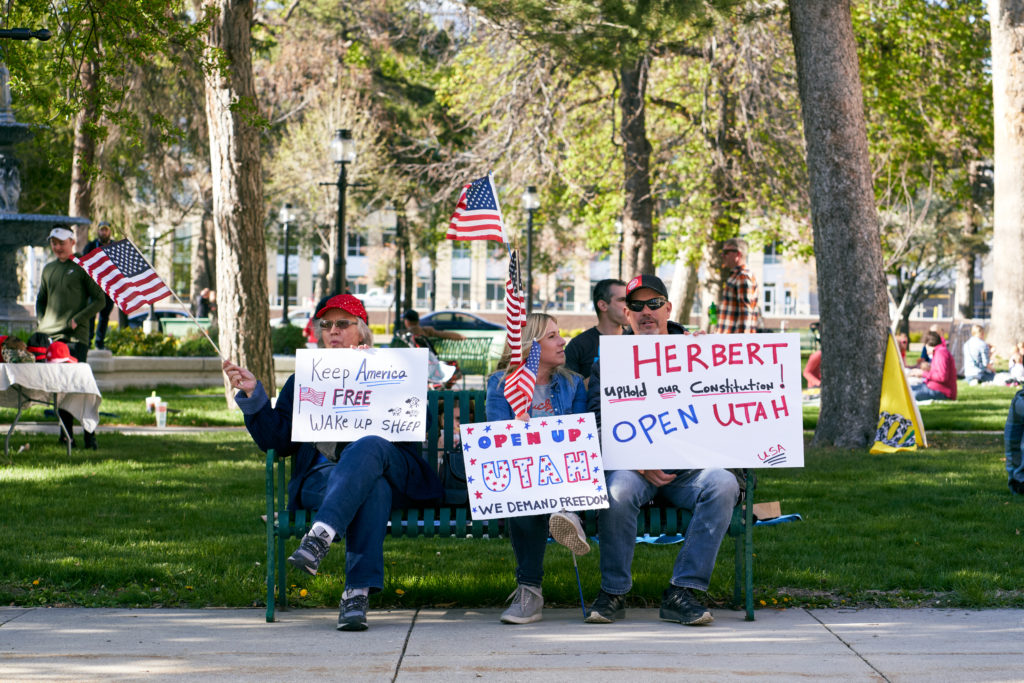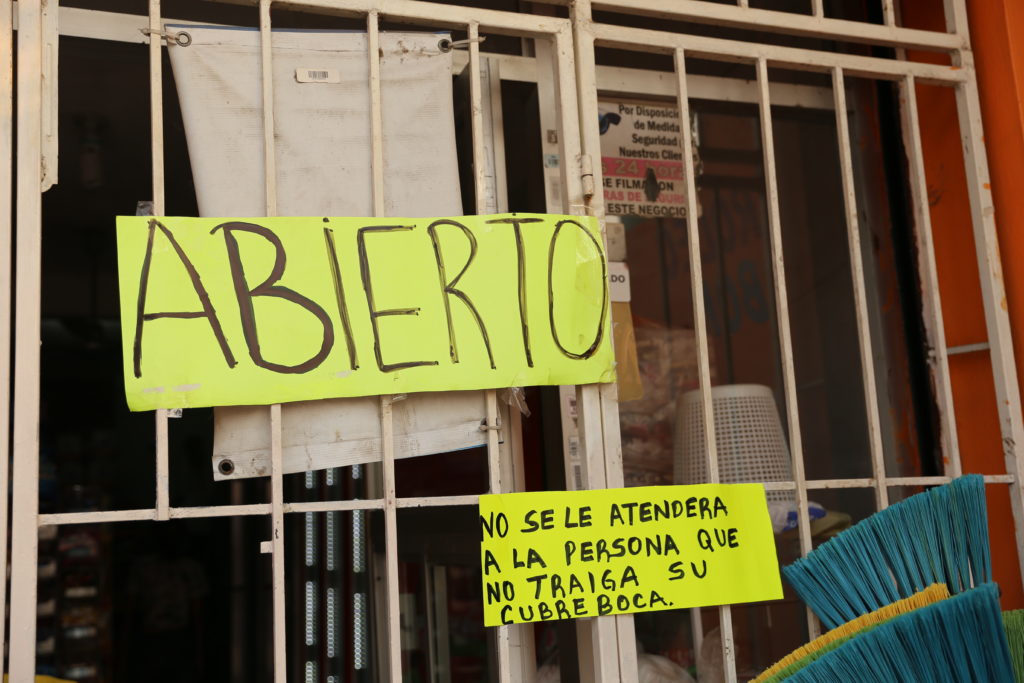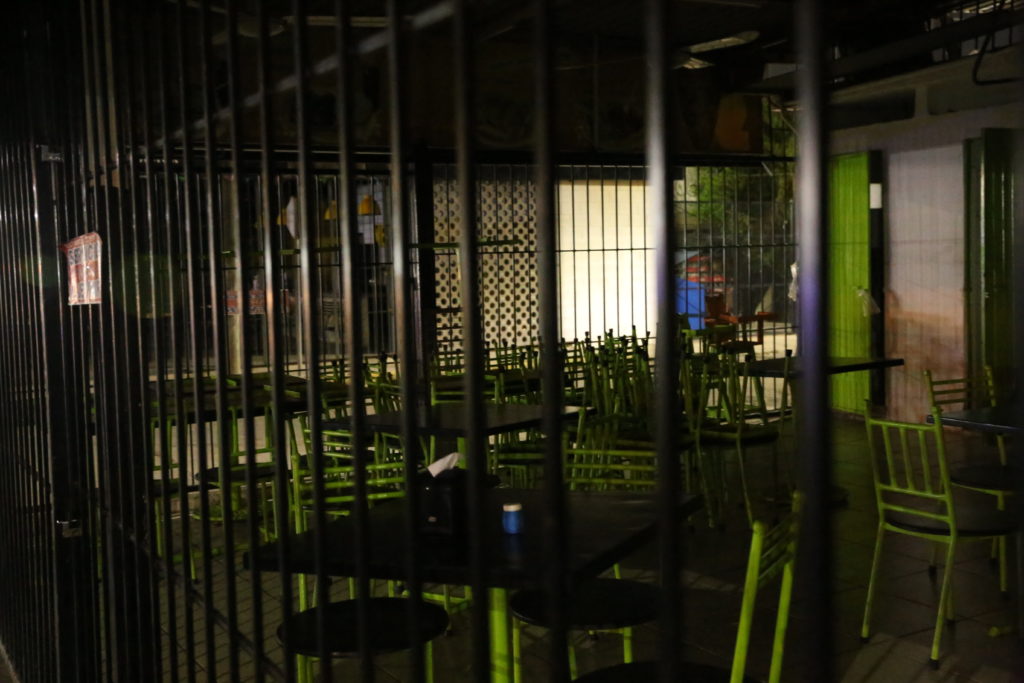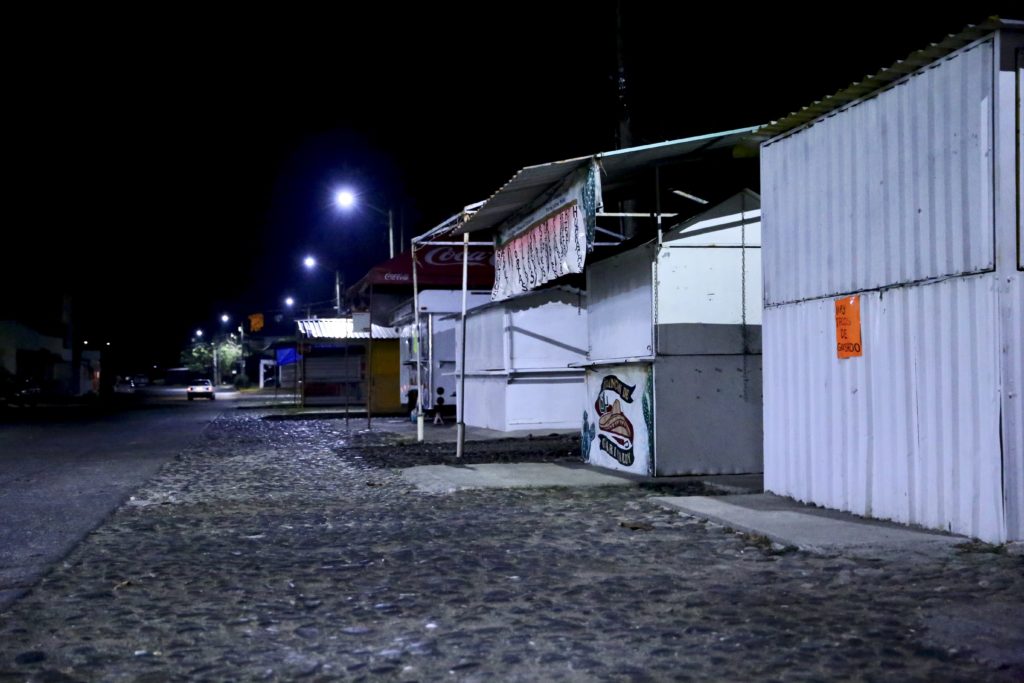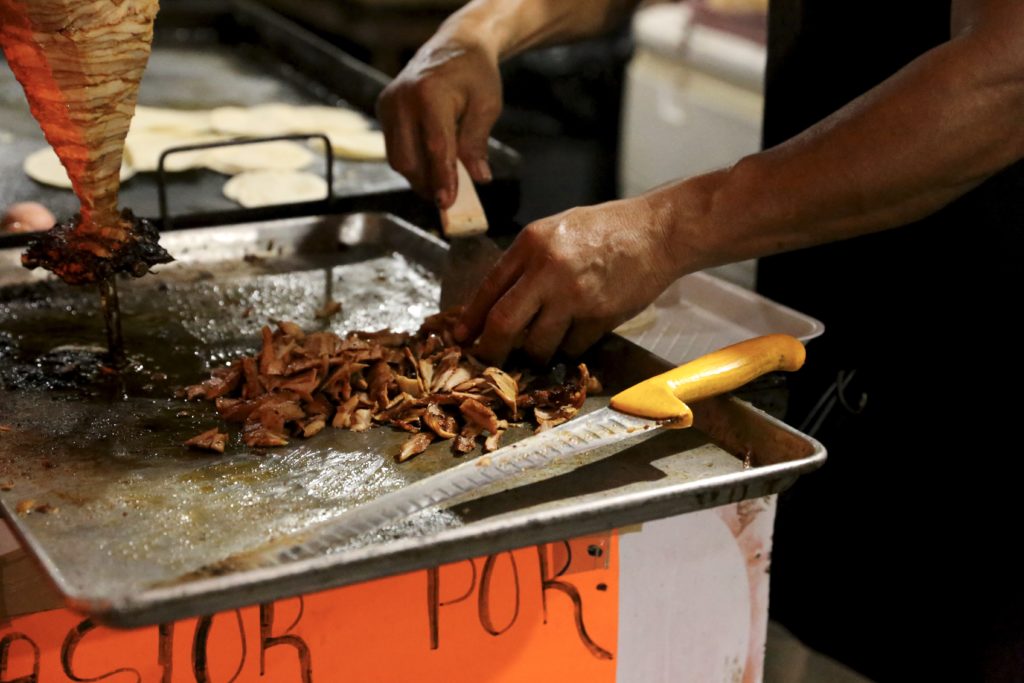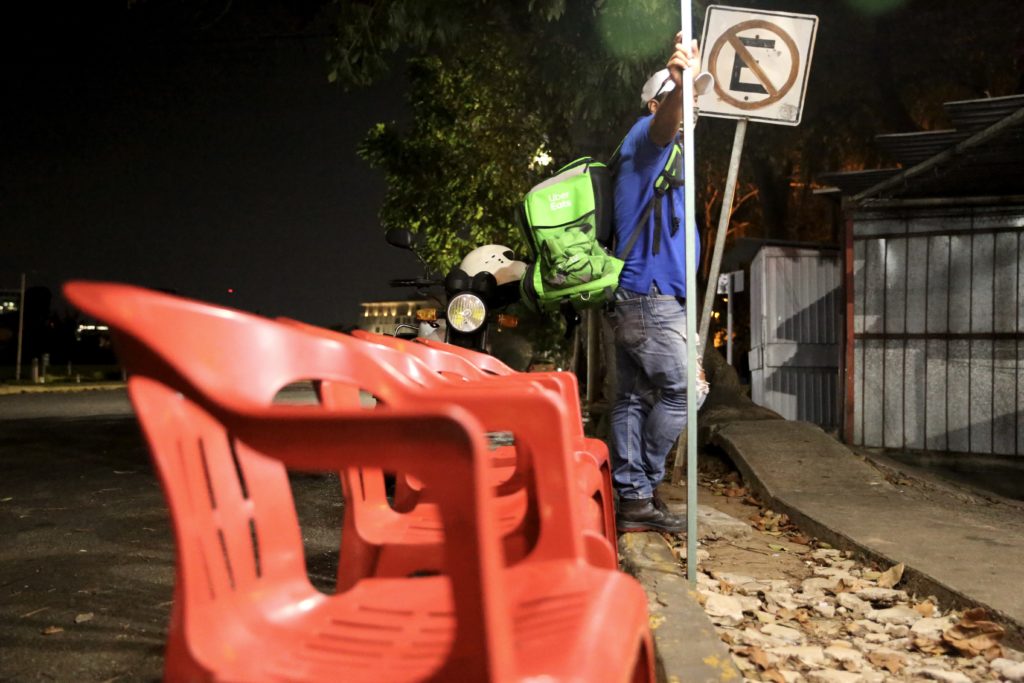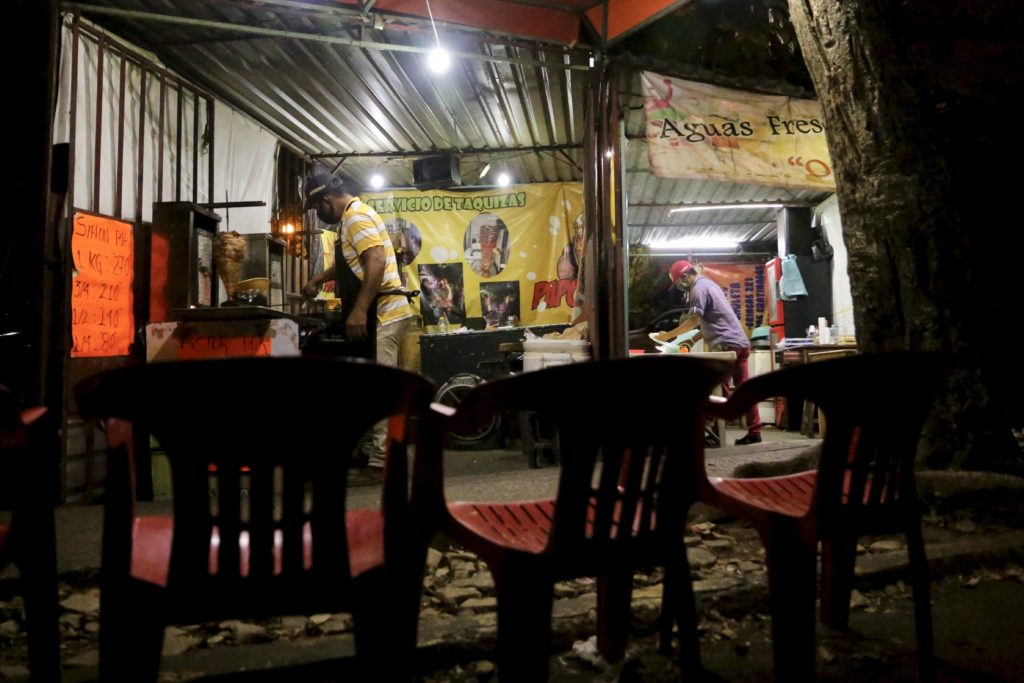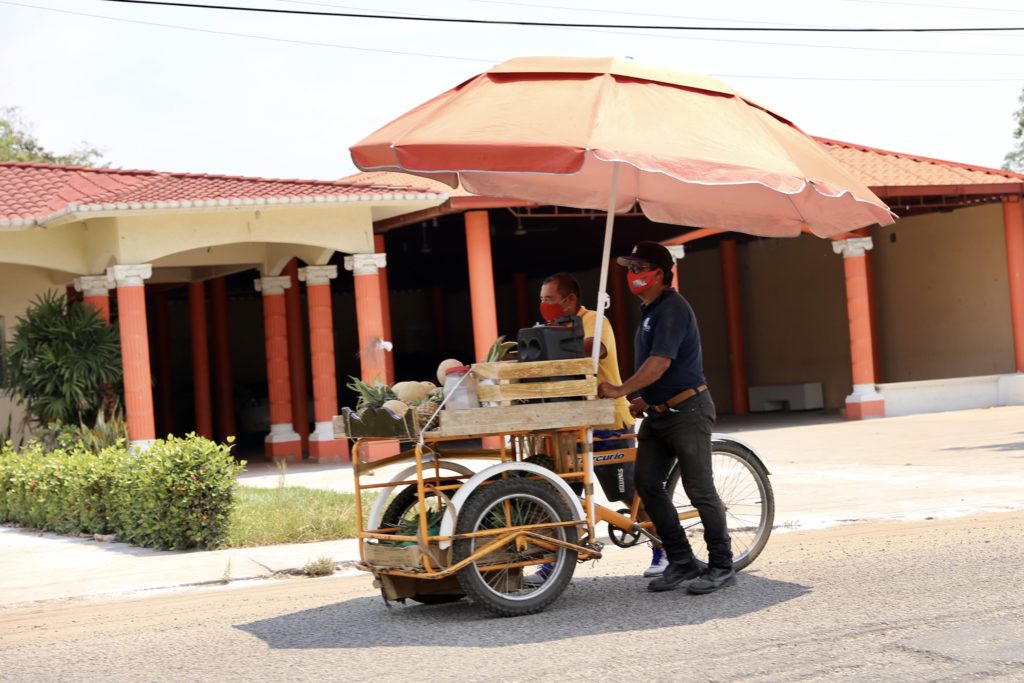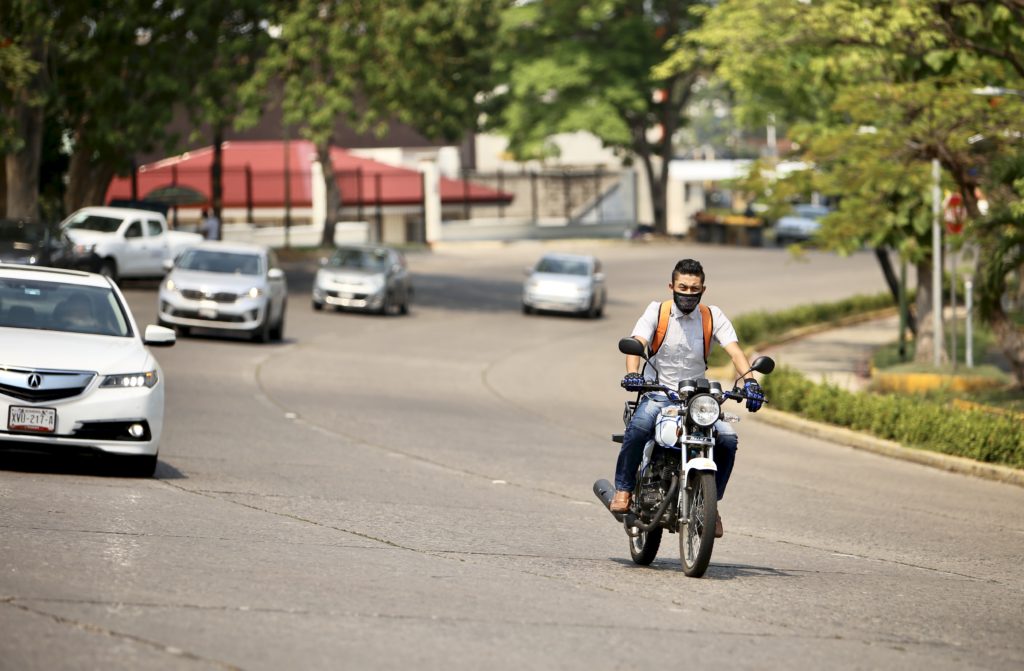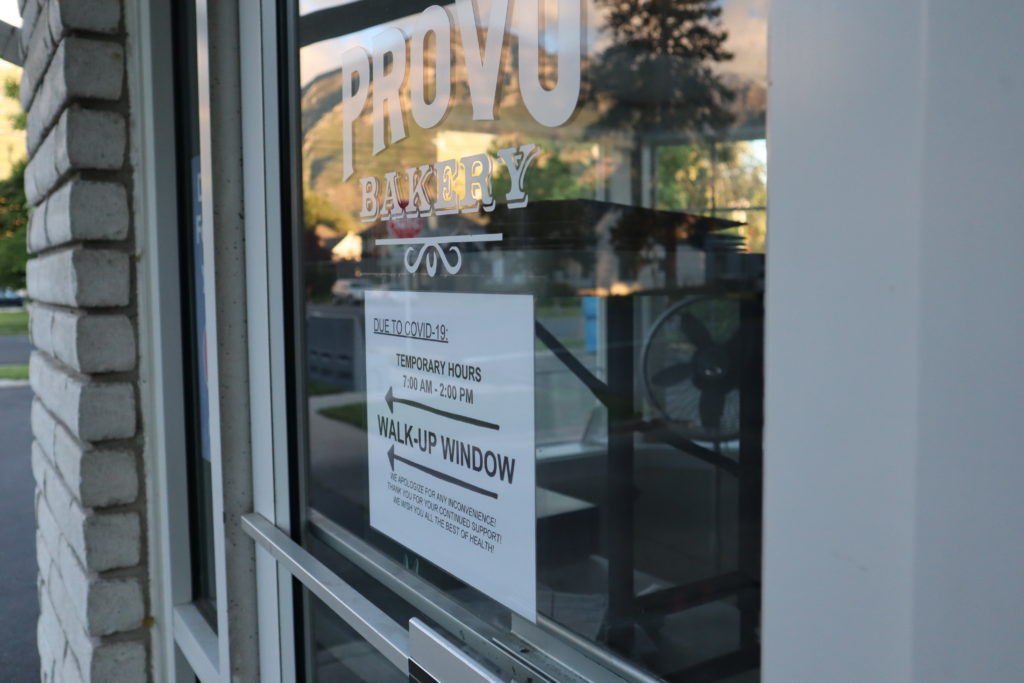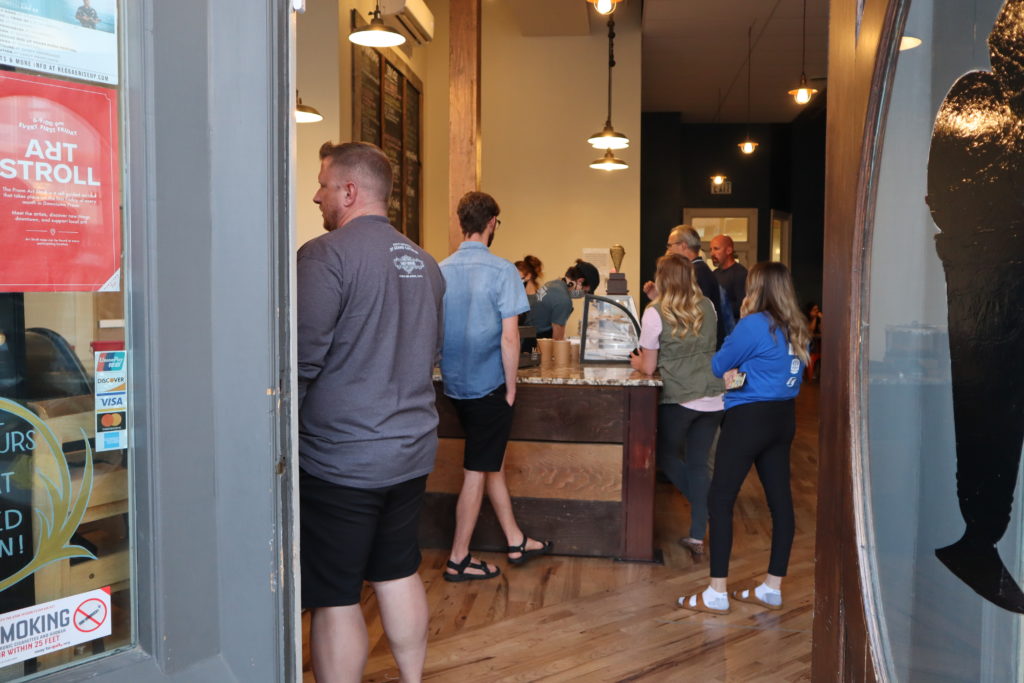Editor’s note: Two Daily Universe reporters, Lisi Merkley and Sydnee Gonzalez, explored how Utah’s response to the COVID-19 pandemic compared to Mexico’s. Merkley reported from Provo, Utah, and Gonzalez reported from Villahermosa, Tabasco, Mexico.
Leer en español: Mismo virus, diferentes respuestas: México vs. Utah
Governments and citizens across the world have had to adapt to the pandemic. Two places — Tabasco, Mexico, and Utah, U.S. — show how political, cultural and societal differences have shaped varying responses to COVID-19 across the world.
The state of Tabasco is located in the South East of Mexico. It is 9,755 square miles and has a population of 2.4 million, compared to Utah’s 84,898 square miles and population of 3.2 million.
The Utah Health Department has reported 10,497 cases and 117 deaths as of June 4 at 11 a.m. In general, Utah falls on the lower end of the national scale with the U.S. at 1.9 million cases. Tabasco, in contrast, currently has the fifth-highest number of cases in the country at 4,807 as of June 3 at 3 p.m, while Mexico has reported 101,238.
Tabasco’s Centro County, where the capital, Villahermosa, is located, makes up 53.19% of the state’s cases, while Utah County makes up 19.65% of Utah’s cases. Lack of widespread, accurate testing measures in both countries means the total case numbers may be much higher.
The differences in the pandemic across the two countries and states goes beyond just numbers. Factors like government response and public attitude also reflect how the two states measure up.
GOVERNMENT REPONSES
Utah’s response to the coronavirus started on March 6 when Gov. Gary Herbert declared a state of emergency in order to prepare for the virus. That same day the Utah Department of Health announced the first confirmed case in Utah to be a 60-year-old-man who had recently returned from a cruise. The man also attended a BYU basketball game before he tested positive.
On March 11, Utah Jazz player Rudy Gobert tested positive, which led to many changes over the following days. Public schools and universities throughout the state shut down and moved classes online, and the governor announced the first set of COVID-19 health recommendations on March 16, which included limiting mass gatherings over 100 and asking people over 60 and immunocompromised residents to stay away from gatherings with more than 20 people.
Tabasco’s first confirmed case came a few days later on March 18 when a 61-year-old woman tested positive for COVID-10 after returning to the state capital, Villahermosa, from a trip to Europe. Classes at schools and universities were canceled and moved online two days later on March 20.
On March 24, the Utah governor announced his economic recovery plan “Utah Leads Together,” which was later revised and allowed the state to move through four different phases of risk as the number of cases changed and more knowledge about the virus was acquired.
As some U.S. states were moving to shelter-in-place orders to curb the spread of the virus, Herbert announced the “Stay Home, Stay Safe” directive on March 26. While never mandatory, the directive asked residents to stay home as much as possible. This directive also encouraged people to practice social distancing and wash their hands frequently.
The state moved fairly rapidly through three of the four phases of risk and is currently in the yellow, low-risk phase. Since May 16, the majority of Utahns can gather in groups smaller than 50 while still practicing social distancing. Most businesses can resume normal operations, but employees are encouraged to continue working from home.
The state of Tabasco has also encouraged the public to stay at home but never issued a mandatory order. Instead, the state enacted certain restrictions to try to flatten the COVID-19 curve, including closing some non-essential businesses, closing all businesses on select weekends and instructing all businesses to close after 6 p.m. Like Provo, Villahermosa has also encouraged residents to order food from home and has created a database of all food businesses offering takeout.
On May 25, the government activated surveillance brigades to better ensure health guidelines are followed. The state has yet to release more information about how the brigades will enforce guidelines. The state also announced the start of a national pilot program that offers isolation in hotels for those who test positive for COVID-19.
MASK WEARING
According to the “Utah Leads Together” guidelines for high, moderate and low-risk phases, people should wear masks or face coverings in situations where social distancing is hard.
However, in Utah and across the U.S., some people have claimed requiring them to wear masks infringes on their freedoms. Commenters on Facebook have claimed there is little or no evidence that masks slow the spread of the virus and that people should be free to choose whether or not to wear masks.
On the other hand, some Utahns say that masks are an easy way to prevent the spread of the virus and should be necessary. Costco locations across the country started requiring masks for anyone visiting the store on May 4, while other stores just recommend or encourage customers to wear masks. The Centers for Disease Control’s website says everyone should wear a face mask in public because people can spread the disease without knowing they have it.
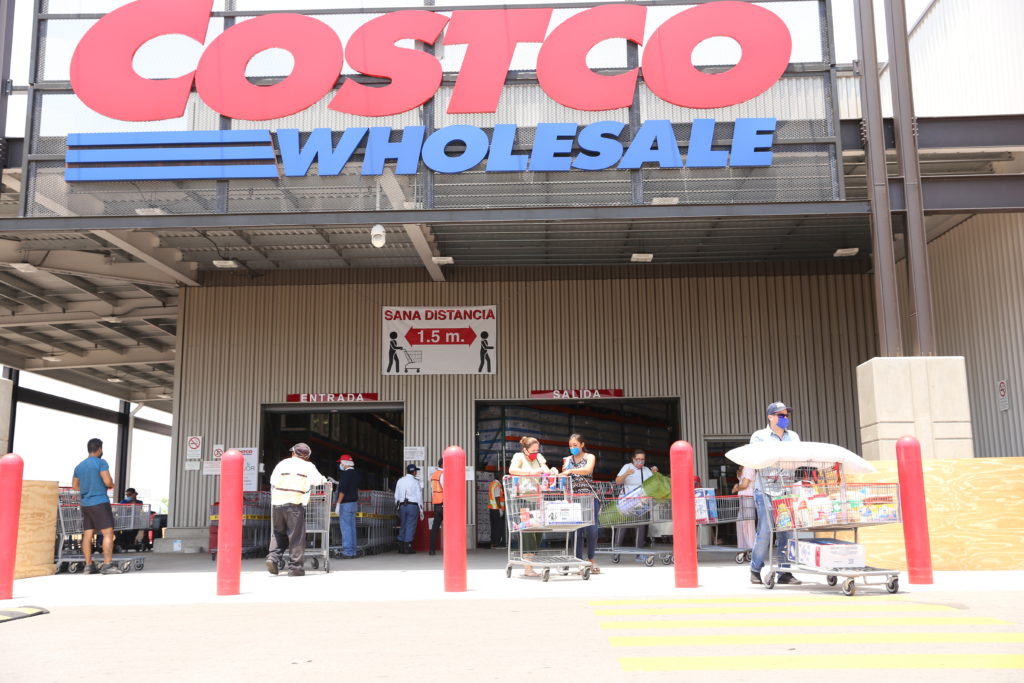
The government of Tabasco made the use of face masks in public mandatory. There are police checkpoints on several main roads in the city to ensure that drivers and motorcyclists comply and that each vehicle has no more than two passengers (one in the front seat and one in the back). Police issue masks to those without one.
Despite average daily temperatures in the 90s and the naturally humid climate, the majority of Tabascans can be seen wearing masks in public, and many streetside businesses have taken advantage of the pandemic by selling masks, hand sanitizer and disinfectant spray.
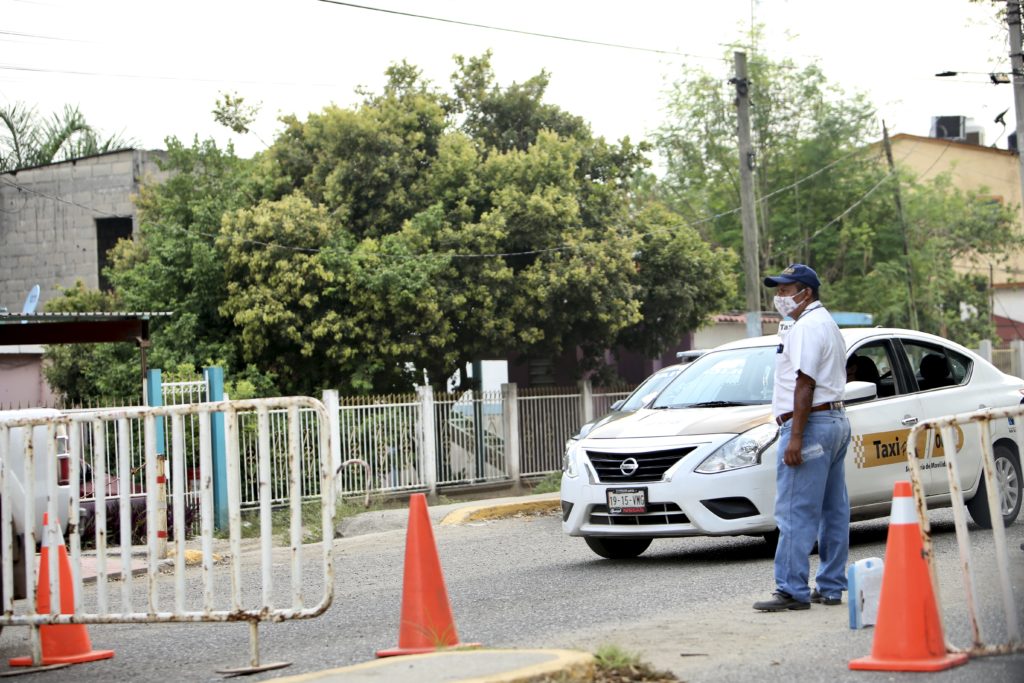
PUBLIC ATTITUDE
In the early stages of the pandemic, Utahns largely supported measures like “Stay Home, Stay Safe” and did their part to curb the spread of the virus. Facebook was full of residents setting temporary profile pictures that included a logo saying “stay home, stay safe.”
However, over time some Utahns have started pushing against these health restrictions and guidelines. On April 18, Utah Business Revival held a rally to protest the guidelines. Attendees said the guidelines were killing the economy and urged the governor to allow Utah businesses to reopen. Other attendees said they attended to fight for their constitutional rights that they feel are violated by the restrictions.
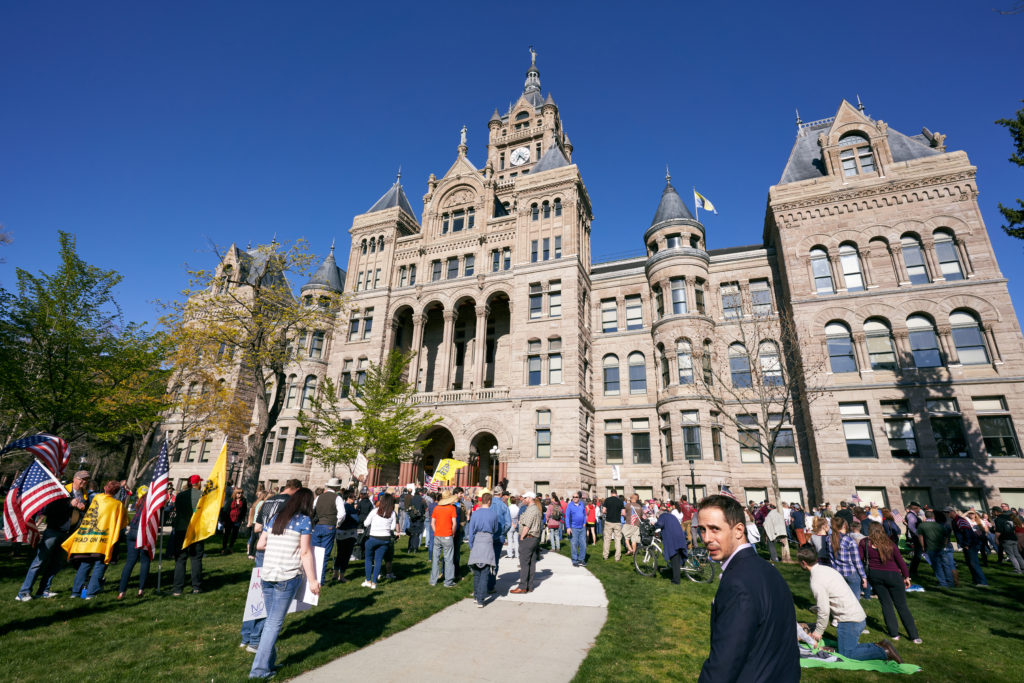
In contrast, some Utahns think Gov. Herbert hasn’t done enough to curb the spread of the virus. The Utah House Democratic Caucus urged the governor to issue a stay-at-home order on April 6. “We do not believe that the current voluntary Stay-Safe-Stay-Home program is as effective in slowing the spread of this virus as an explicit stay-at-home order,” their press release said.
After every announcement that all or parts of the state are moving to a lower level of risk, people on both sides take to social media to voice their differing opinions on the issue: either celebrating or worrying. What started as a unified effort to save lives has turned into a two-sided argument about the validity of guidelines and even the virus itself.
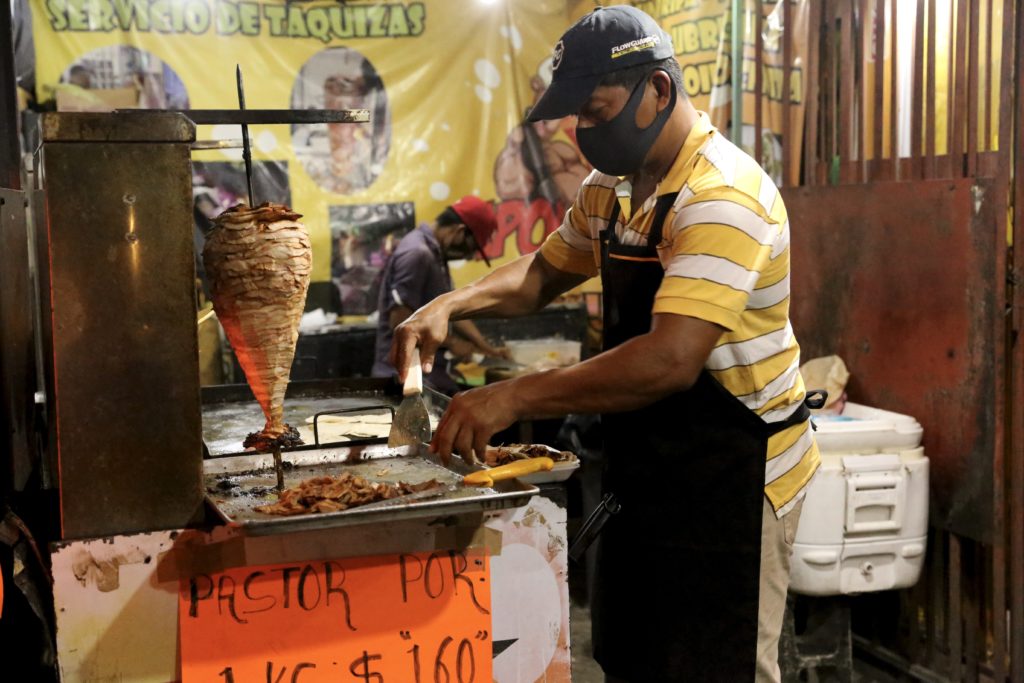
Residents in Tabasco have been more accepting of government guidelines and restrictions. Unlike in the U.S., mask-wearing and other pandemic guidelines have not become a politically charged issue. There have been a few protests in Mexico that were sparked by the pandemic — although none in Tabasco — but they’ve been about lack of medical equipment or lack of updates to families from hospitals on COVID-19 patients, not infringement of rights.
Resistance to government mandates is mostly seen in small business owners, who stay open later than the 6 p.m. curfew — albeit while still practicing safety measures with those they interact with — to serve people, usually an UberEats driver or a handful of customers if they’re lucky.
Testing
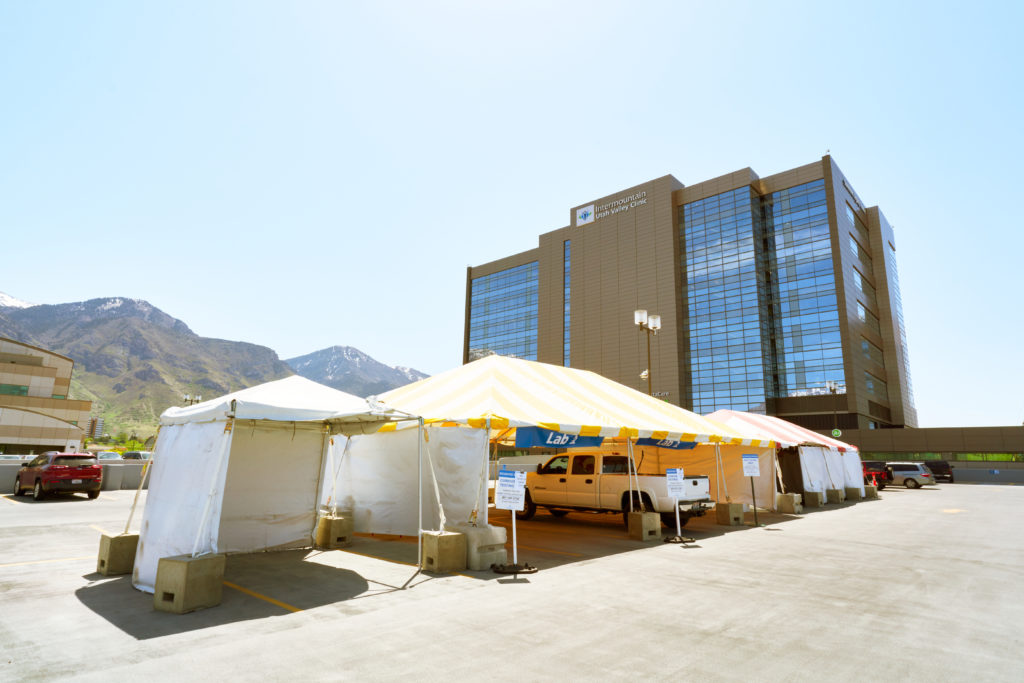
Utahns can get tested in multiple locations throughout the state. Hospitals like the Utah Valley Hospital in Provo have set up tents in the parking lot to conduct testing. (Preston Crawley) 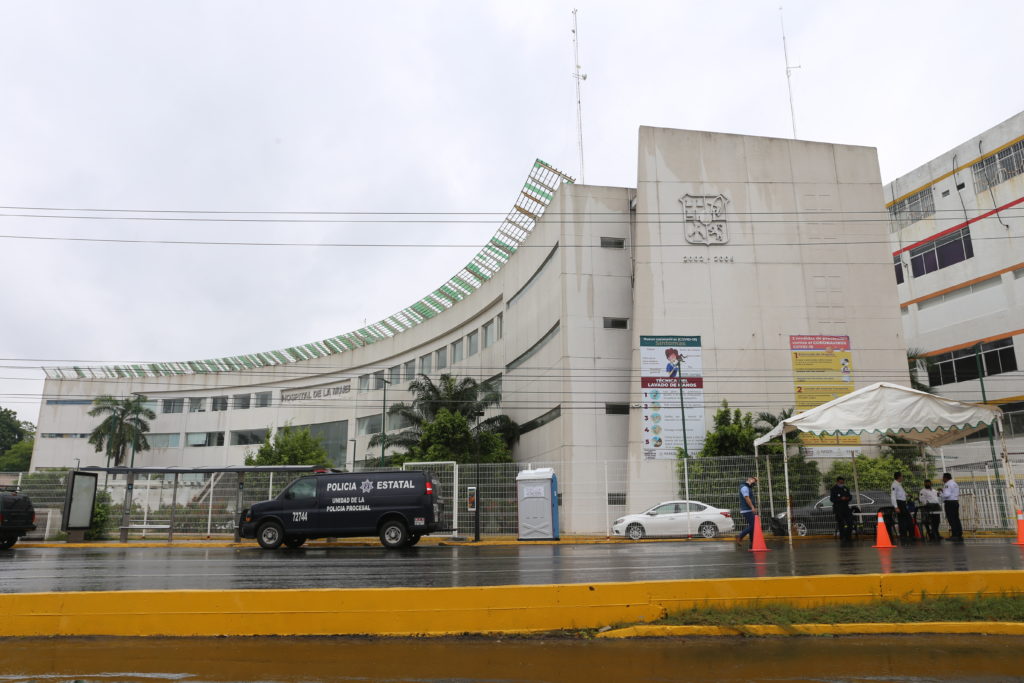
Police officers keep watch outside of Villahermosa Women’s Hospital on June 2. All hospitals currently have police posted outside and many back roads to hospitals have been shut down to prevent unauthorized entry into hospitals. (Sydnee Gonzalez)
Utah’s response to testing has been unique because the state has partnered with local businesses to help supply many of the tests.
TestUtah was created by a partnership with Utah government officials and Silicon Slopes. Utahns can go to TestUtah.com to take an online health assessment that asks about symptoms and potential exposure to the virus. If people say they have at least one symptom, they will be directed to schedule an appointment to get tested. TestUtah also gave some tests to people without symptoms to see if they were an asymptomatic carrier of COVID-19.
Utahns can also get prescribed a test from their doctor. As of June 3, 223,981 people have been tested in Utah.
Tabasco Gov. Adán Augusto López Hernández announced via Twitter May 25 that the state was third nationally in the number of tests administered for every 100,000 residents. The state has not released the exact number of tests administered.
Testing in Tabasco has been less accessible than in the Beehive state. Residents have been instructed to call an emergency number if they have symptoms. A medical professional will then go through symptoms with the caller and determine if the caller’s symptoms are severe enough to warrant being checked into a hospital. If their symptoms are mild, callers are told to stay at home. This system means only those with severe symptoms will be tested at a hospital — a stark contrast to Utah’s mobile testing site method.
Testing in Mexico has been criticized harshly by some. According to The New York Times, far fewer than one in 1,000 people in Mexico are tested for the virus. The country’s top health official, Hugo López-Gatell Ramírez, told CNN he doesn’t think testing is “a must” for reopening the country. “This doesn’t mean we’re resistant to testing, we will use testing but in a carefully planned manner.”


